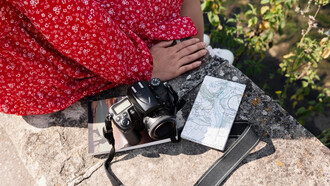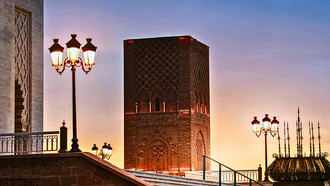It was Captain James Cook who brought verdant Vancouver Island to the attention of the British in 1778 during one of his voyages to the Pacific Northwest. The island was eventually named after the British naval captain George Vancouver, who had attempted a friendly settlement with Spanish colonizers over the island in 1792.
In 1849, the British gained sovereignty over the 460 kilometer-long (or 285 mile-long) island that covers more than 12,000 square miles. In 1846, the United States and Britain had established the 49th parallel as the primary international boundary in the Pacific Northwest, with a small dip south to encompass Vancouver Island and the nearby Gulf Islands, which happen to be the only parts of Canadian land south of the 49th parallel marker. The Island is the top of a partially submerged mountain system.
Victoria, on the southern tip of the island, is the capital city of the province of British Columbia. Almost half of the island’s population lives in Victoria. It is also the port of entry for the majority of visitors, who arrive by air, including numerous float planes, or on one of the many ferries from mainland Canada or Seattle, Washington. The city is adorned with flowers, especially on the grounds of the grand dame of the island's hotels, the Fairmont Empress. The nearby century-old Butchart Gardens is one of the world’s best-known public gardens, a haven of 55 acres of gardens, 900 varieties of bedding plants, and 26 greenhouses.
Many species of whales populate the waters surrounding the island or migrate through the area. Whale watching tours are thus a popular tourist attraction. On a zodiac boat tour I took off the western coast, I was treated to shows by gray and humpback whales, sea otters, seals, and sea lions. Soaring bald eagles accompanied our boat to the docks on the way home. Orcas, sometimes known as killer whales, can be seen during certain seasons. Bear watching tours to observe as the bears forage for food from platforms or boats have increased in popularity.
Indigenous people lived on Vancouver Island for thousands of years before the European settlers arrived. The primary groups are the Kwakwaka’wakw, Nuu-chah-nulth, and Coast Salish peoples. The term “First Nations” generally identifies Indigenous people in Canada who are neither Inuit nor Metis people. Collectively, First Nations, Inuit, and Metis peoples constitute Indigenous Peoples of the Americas, though there is no legally recognized definition of the term.
The Canadian government officially apologized to its Aboriginal peoples in 2008 for the separate school system that had been in place for more than a century. The prime minister acknowledged that its former official policy of assimilation was wrong and had a lasting, damaging impact on Aboriginal culture, heritage, and language. Healing has progressed in recent years.
The Royal BC Museum in Victoria now showcases many First Nations’ cultures in British Columbia. The Museum’s collections represent 10,000 years of history from across the province. When I visited in August 2024, I toured a First Peoples’ language exhibit in the Museum, called Our Living Languages, First Peoples’ Voices in British Columbia. The exhibit stressed the desire and effort to revitalize First Peoples’ languages, primarily preserved by elders in the First Peoples communities despite governmental long-time restrictions on usage.
Indigenous art is now celebrated on Vancouver Island, with totem poles dotting public parks, for example. The original inhabitants of the land on which various modern buildings have been established are frequently recognized today, including with honorary plaques.
Outside of the capital city, travelers can explore old-growth forests, snowcapped mountains, rugged shorelines, and a diverse ecosystem on Vancouver Island. A stop in Cathedral Grove in MacMillan Provincial Park was a highlight of my cross-island drive. Eight-hundred-year-old Douglas fir trees loom above visitors in the park, and boardwalk paths have been constructed in many park areas to protect the giants.
The surf town of Tofino is also a popular island attraction. Reachable primarily by Highway 4, the only road that cuts east-west across the island, the town of only 2,500 residents or so has a laid-back vibe. Pacific Rim National Park Reserve is on the way to Tofino, and the drive is a pretty, winding one, across some mountains and with a few lake views. Visitors come to Tofino to watch storms on the water during the winter months.
I, personally, am partial to Tofino’s southern neighbor and slightly smaller town, Ucluelet, colloquially known as Ukee. The Wild Pacific Trail partially winds along the coast of Ucluelet, offering views of gorgeous coastline and, inland, ancient forests. Ucluelet’s oceanic climate resembles that of Ireland.
The rest of Canada envies the mild winters and moderate summers enjoyed on Vancouver Island. The world should envy its towering old-growth forests, its abundant marine life, and its gorgeous, diverse landscapes.















